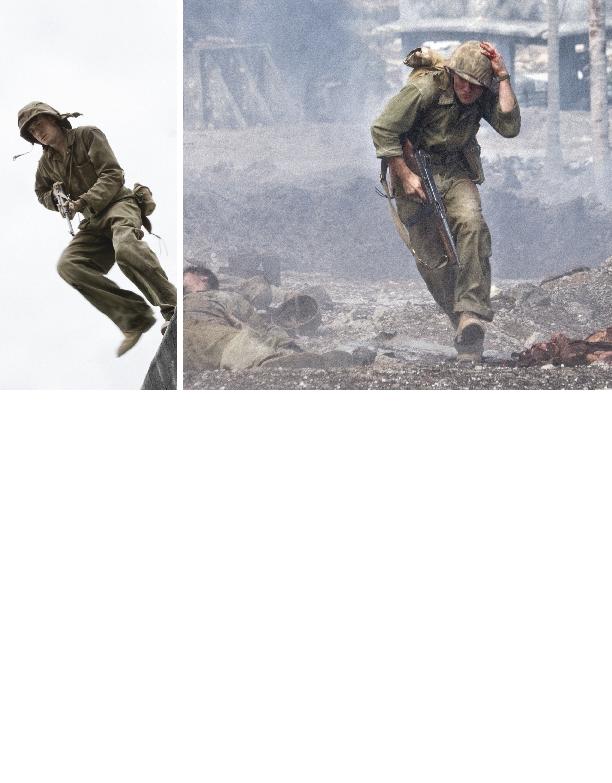
the project (which he also co-wrote). He had
previously directed an installment of From
the Earth to the Moon and wanted to take on
one of The Pacific's stories as well. To his de-
light, Spielberg agreed, but due to the in-
tense prep that came along with directing,
his duties as a showrunner had to take a
backseat. Suddenly, the clock was turned
back and McKenna received a "battlefield
promotion," as he calls it, to become the
showrunner. "It was the greatest profes-
sional experience of my life and I thank Gra-
ham for that," he says.
to take over some of the rewriting duties
while Yost was off prepping his episode.
This put McKenna in the awkward position
of giving his boss script notes. "He would
turn a script in to me and I would have to
figure out how to give him notes and sug-
gestions," McKenna laughs. "It was some-
what frightening!"
I," Yost explains, "but McKenna not only
chose what that boulder was going to be.
He found the stories and figured out the
course of the whole thing. The rest of us
were there to just help polish the boulder
once it was rolling."
cut the original 13 episodes down to 10.
McKenna and the other writers originally de-
vised a plan that included episodes dedicated
to the bombing of Pearl Harbor (as the series
opener) and also the experiences of a pilot
who was shot down during the Battle of Mid-
way. Though the ambition was admirable,
neither episode would have featured Sledge,
Leckie or Basilone. In the end, it was decided
that they made the narrative feel too sprawl-
ing. Ultimately, it was Hanks who spoke up
and rededicated the series' focus back to the
three marines. This change gave the writers a
more structured environment to work within,
which was greatly appreciated by all. "Struc-
ture can be a great gift," McKenna says. "It
forces you to focus on exactly what's impor-
tant and what you need to do with the time
the series down to what was important."
terpiece of the entire show. "It enabled us to
really spend a lot of time with him,"
McKenna says. "A lot of war movies don't
have the luxury of doing that. Full Metal
Jacket and Platoon are great movies, but be-
cause we had the time, we could properly
depict Sledge's slow decent into the depths
of hell."
fellow soldier callously tossing pebbles into
the open skull of a recently deceased Japan-
ese soldier, each pebble echoing in the man's
blood-filled cranium. The image, taken di-
rectly from the book, is shocking and stir-
ring, and McKenna made a point to include
it. "Chris Anderson, the editor at World War
II magazine at the time, made me promise to
put that in there," he says. "That was his fa-
vorite moment from Sledge's book and, re-
ally, it's one of the most crucial." In that
scene, Sledge also threatens to cut out the
Japanese man's teeth in order to get the gold
from them (a call back to an earlier episode